 August 27, 2015 John E. Ross, KD8IDJ, Editor
| |||||||
ARRL President Expects Parity Act House Bill Cosponsorships to Top 100 Soon ARRL President Kay Craigie, N3KN, expects to see the list of cosponsors for the US House version of the Amateur Radio Parity Act of 2015 -- H.R. 1301 -- top 100 soon after Congress reconvenes following its August recess. As of August 27, the measure had attracted 94 cosponsors. A US Senate version of the bill -- S. 1685 -- also has been introduced. President Craigie again encouraged ARRL members to urge their congressional delegations to cosponsor the bills. Summertime ARRL conventions have also been affording more members a chance to make their voices heard.
The identically worded Amateur Radio Parity Act of 2015 measures would direct the FCC to extend its rules relating to reasonable accommodation of Amateur Service communications to private land-use restrictions. It would require the FCC to amend its Part 97 Amateur Service rules to apply the three-part test of the PRB-1 federal pre-emption policy to include homeowners association regulations and deed restrictions, often referred to as "covenants, conditions, and restrictions" (CC&Rs). At present, PRB-1 only applies to state and local zoning laws and ordinances, and the FCC has been reluctant to extend the same legal protections to private land-use agreements without direction from Congress.
President Craigie said ARRL staff members and officials have helped members to generate well over 4000 letters to Senators and Representatives at ARRL conventions this summer. Local radio clubs have held letter-signing events at their meetings as well. This week, the ARRL forwarded more than 1000 such letters for hand delivery to Capitol Hill. "But we need a lot more member action now, to push our bills ahead," she added. "We need letters, phone calls, e-mails from every ARRL member to our Senators and Representatives. We need every ARRL member to urge our friends in our clubs, on our nets, and on our social media, to take 5 minutes today to do something critically important for the future of Amateur Radio." AMSAT is also encouraging its members to urge lawmakers to cosponsor the two bills. The satellite organization has pointed out that reaching orbiting spacecraft via an appropriate ground station is something that may be denied to satellite enthusiasts living in neighborhoods where outside antennas are restricted or prohibited. The Amateur Radio Parity Act of 2015 page on the ARRL website has complete information on how to become involved. "Capitol Hill needs to hear from every friend of Amateur Radio by the end of August," President Craigie said. "Every voice, your voice, makes a difference." Amateur Radio Volunteers Face Fire Threat While Supporting Emergency Communication The North-Central Washington town of Republic touts "air you can't see" on its website. That's not the case this week. Wildfires in the US Northwest have not only hampered the air quality and visibility, but led
to a Level 2 evacuation order in the Ferry County community of about 1000 residents. That could rise to Level 3. Amateur Radio volunteers in Ferry County have been on the front lines of the wildfire emergency there. In Republic, a combination of Ferry County Search and Rescue (SAR), Community Emergency Response Team (CERT), and ARES/RACES volunteers have been supporting communication for a shelter housing some 4 dozen evacuees -- with more to come, according to Ferry County ARES Emergency Coordinator and RACES Radio Officer Sam Jenkins, WA7EC. "We are now close to our maximum support level for local volunteers," Jenkins told State RACES Officer Monte Simpson, AF7PQ, who also is ARRL Western Washington Section Manager. "We are now expecting to operate for several weeks at the Republic High School. The firefighters say they are going to attempt to defend our emergency operations center/emergency shelter at all costs," Jenkins added. "We are standing our ground."
In addition to being the Ferry County ARES EC and RACES RO, Jenkins explained, he also heads the SAR component of the dual Ferry County SAR-CERT contingent. "I have networked these three units together over time to increase the effectiveness of our small, poor, but valiant teams," he told ARRL. At present, he's working under the RACES banner. Firefighters from several states and British Columbia, Canada, have been working the Kettle Complex of three fires in Ferry County, which covered nearly 60,000 acres as of August 26. No injuries have occurred and no homes have been lost. Support teams from the Washington National Guard are assisting fire managers to ensure safety. West of Republic near Omak, the Okanogan Complex at more than 280,000 acres is now the largest fire complex in the state's history.
According to the National Interagency Fire Center (NIFC), wildfires continue to burn actively across the West. The NIFC reports that 66 large fires -- or complexes -- have burned nearly 1.6 million acres in 11 states. Twelve fires are burning in Washington alone. Jenkins said his team of volunteers would like to have additional support, but, he told Simpson, "I would expect that it is asking a lot for anyone to leave the comfort of their home to travel to a place where the smoke is so thick you can cut it with a knife, and not know if they would escape." Radio amateurs responding to the wildfire emergencies have been using VHF repeaters as well as HF on 75 and 40 meters, including SSB and digital modes, and IRLP. "We are doing our best at doing our thing," Jenkins said. "I am concerned about what is happening in our sister counties." FCC Universal Licensing System, Other Applications to be Down for Maintenance FCC website maintenance in early September will make the Universal Licensing System (ULS), the Electronic Comment Filing System (ECFS), the Electronic Document Management System (EDOCS), and other public applications unavailable for more than 5 days. The Commission said the outage will begin at 2200 UTC on Wednesday, September 2, and continue through the Labor Day weekend. The maintenance work should be completed by 1200 UTC on Tuesday, September 8. During the ULS outage, it will not be possible to file any Amateur Radio applications.
Although the regulatory fee for Amateur Radio vanity call sign applications will officially disappear on September 3, prospective applicants will have to wait until September 8 (1200 UTC) -- or until after the ULS is back online -- to file without paying the fee. The FCC has told ARRL that the approximately 18-day waiting period for a vanity call sign to be granted will remain in place "for now." The FCC will extend filing deadlines for all regulatory and enforcement filings that fall during the maintenance period. Filings due on September 2, 3, 4, or 8 now will be due on Wednesday, September 9. "Except for the due dates specified herein, we are not automatically extending the deadlines for any other comment or filing periods that will be running during this time period, but requests for extension of time will be considered consistent with the Commission's normal practice," the FCC Public Notice said. "To the extent the due dates for filings to which reply or responsive pleadings are allowed are affected by this Public Notice, the due dates for reply or responsive pleadings shall be extended by the same number of days." Read more. FCC Proposes to Fine Ohio Radio Amateur for Malicious Interference, Failure to Identify The FCC has proposed levying an $8000 fine on a Cincinnati, Ohio, radio amateur, Daniel R. Hicks, KB8UYZ, who at one point had volunteered to track down the interference he was causing on a number of primarily VHF repeaters. In a Notice of Apparent Liability for Forfeiture (NAL) released on August 20, the FCC Enforcement Bureau asserted that Hicks intentionally interfered with other Amateur Radio operators' communications and failed to identify properly. According to the NAL, an agent from the Bureau's Detroit office first responded to multiple complaints of interference on various repeaters in April 2014.
"This time, the agent did not advise the local Amateur Radio group that he was in the area," the NAL stated. "The agent used mobile direction-finding techniques to locate the source of the transmissions to...the address of record for Mr Hicks' amateur station, KB8UYZ." ARRL Great Lakes Division Vice Director Tom Delaney, W8WTD, in his role as a spokesperson for the Greater Cincinnati Local Interference Committee, said at first the interference, which began in early 2014, was a nuisance, but later it turned obscene and racist. He said his group was able to track the signals to a particular neighborhood, but group members were surprised to learn who was behind the interference.
"We did not know, until the FCC actually caught him, who it was," Delaney told ARRL. "We had our suspicions. We were very close to finding the source but were not quite there, but that helped the FCC." He said Hicks employed a "sophisticated" synthesized voice and very short transmissions across several repeaters to make him difficult to pin down. According to the NAL, the agent monitored transmissions emanating from Hicks' station for about an hour and heard the station transmit several recorded messages. "These transmissions prevented other amateur licensees from communicating over the frequency," the NAL said. "During the monitoring period, the agent did not hear Mr Hicks transmit his assigned call sign. The transmissions used the call sign of another licensee." Delaney said the holder of that call sign had no idea why Hicks used it. The FCC said it has determined that the evidence in the case was sufficient to establish that Hicks caused willful and malicious interference and failed to identify using his assigned call sign. Read more. Two Incumbents Face Opposition in 2015 ARRL Director, Vice Director Election Cycle Two incumbents face challenges in the 2015 election cycle for ARRL Director and Vice Director. Both races are in the ARRL Northwestern Division. Incumbent Director James Pace, K7CEX, of Centralia, Washington, will face a challenge from William Balzarini, KL7BB, of Auburn, Washington. Delvin Bunton, N7QMT, of Vancouver, Washington, is seeking to unseat Northwestern Division Vice Director Bonnie Altus, AB7ZQ, of Sheridan, Oregon. The ARRL Ethics and Elections Committee earlier determined all candidates for the 2016-2018 term in this year's election cycle to be eligible and nominated.
Ballots will be mailed on October 1 to ARRL members in good standing in the Northwestern Division as of September 10, 2015. Ballots will be counted under the supervision of an independent auditor, and the successful candidates will be announced on November 20. The Ethics and Elections Committee agreed in January to return to using solely paper ballots, after instituting a hybrid paper and electronic balloting process in the autumn of 2012. Online balloting proved popular among those who took advantage of it, but overall voter participation declined significantly. See August 2015 QST, p 78, for more information.
Outcome for 5 MHz at WRC-15 Remains in Limbo With the deadline to submit proposals to World Radiocommunication Conference 2015 (WRC-15) now less than 2 months away, it's still unclear how at least one agenda item of importance to the Amateur Radio community will fare. That is agenda item 1.4, which calls on the delegates to consider a secondary Amateur Radio allocation at 5 MHz (60 meters). In the US and in most other countries where amateurs have privileges there, ham radio has a set of fixed channels at 5 MHz -- not necessarily the same from one country to the next, although most are common.
In his July 2015 report to International Amateur Radio Union Region 3 Conference to be held this October in Indonesia, ARRL CEO David Sumner, K1ZZ, said that while the US is "generally supportive" of the Amateur Radio and Amateur-Satellite services at WRCs and in other International Telecommunication Union (ITU) venues, "it has been difficult to gain support from the federal government side for agenda item 1.4." The ARRL is a member of IARU Region 3 to represent the interests of FCC-licensed radio amateurs residing in Guam; the Northern Marianas; American Samoa; Baker, Howland, Jarvis, and Wake islands; Palmyra Atoll, and Kingman Reef. When he submitted the report to IARU R3 in July, Sumner had said that the best ARRL could hope for in the US position was a 25 kHz secondary allocation at 5 MHz, "and only then if this becomes the CITEL Inter-American Proposal (IAP)," he explained. CITEL completed its work earlier this month and will put forward an IAP for a 175 kHz secondary allocation at 5275-5450 kHz, with support by up to a dozen countries. That's not a proposal the US or Canada could support, however. Sumner noted that as of now, only one formal proposal for agenda item 1.4 has been submitted, and it calls for no change at 5250-5450 kHz. It came from the Regional Commonwealth in the Field of Communications (RCC), the regional telecommunications organization made up primarily of the former Commonwealth of Independent States countries of which Russia is the largest. Other regional telecommunication organizations still have not submitted formal proposals. Sumner said this week that it's not possible to predict what might happen at the European Conference of Postal and Telecommunications Administrations (CEPT) meeting in a few weeks. CEPT is the umbrella organization for 48 European nations. "We appreciate the strong support from so many Latin American and Caribbean administrations and remain hopeful that a favorable consensus can be reached in Geneva in November," Sumner said. Read more. IARU Reiterates Commitment to Coordinate Satellites Only Within International Band Plans In apparent reference to efforts by China's Amateur Satellite Group (CAMSAT) to coordinate operating frequencies for nine satellites set to launch in early September, the International Amateur Radio Union (IARU) has made it clear that it will not coordinate frequencies that do not conform with accepted band plans for all three IARU regions. The IARU has informed CAMSAT CEO Alan Kung, BA1DU, that it was only able to coordinate uplink and downlink frequencies for two of the nine spacecraft (CAS-3/XW-2D and E), but it has not made that letter public. CAMSAT has said it plans to launch the nine satellites, all carrying Amateur Radio payloads, on September 7 or 8.
The IARU statement suggested that the popularity and high occupancy of 2 meters "led to a request by satellite builders for coordination outside the spectrum reserved for satellites in the IARU band plans (145.800-146.000 MHz), as not enough channels are available to satisfy their requirements." The IARU said that, in theory, satellites could be programmed only to operate while orbiting above their countries of origin, but "because satellite orbits make it difficult to pinpoint operations, spillover to other regions may occur during parts of the orbit. Accordingly, IARU will not coordinate frequencies for satellites which are planned to operate outside the internationally aligned IARU band plans for amateur satellites." The IARU statement noted that its frequency coordination service aims to "maximize spectrum utilization and avoid possible interference to other satellites and ground stations." The IARU recommended that satellite groups "work on a sharing plan or use other parts of the Amateur Service spectrum designated for satellite operation," and it suggested resurrecting 10 meters -- once popular as a satellite band, but largely unused today -- as one possibility for uplink channels. "The band segment 29,300-29,510 MHz has been used for Amateur-Satellite downlinks for more than 40 years, beginning with Australis-OSCAR 5 in 1970 and AMSAT-OSCAR 6, AMSAT's first communication satellite, in 1972," the IARU statement noted. Just one amateur satellite actively uses a 29 MHz downlink -- AMSAT-OSCAR 7, launched in 1974. Conceding that 29 MHz downlink frequencies "would not be practical for today's very small satellites" due to antenna size considerations, the IARU said the band could be used for uplinks, even with small receiving antennas, because Earth stations can run sufficient transmit power to overcome the disadvantage. "The IARU Satellite Adviser and his panel believe that the 10 meter band offers a good alternative to 2 meter uplinks," the IARU said.
AMSAT President Barry Baines, WD4ASW, said his organization's Advanced Satellite Communications and Exploration of New Technology (ASCENT) initiative is exploring alternatives to address the proliferation of CubeSats and the resulting pressure on 2 meters and 70 centimeters. He pointed out that the 200 kHz IARU allocation on 2 meters "is not very wide" given the number of satellites being launched, but the use of 10 meters is impractical in this era of CubeSats. "It is incumbent upon the Amateur-Satellite community to develop new ways of 'keeping Amateur Radio in space' that take advantage of other bands and provide enhanced services through appropriate technologies, given the need to find suitable bandwidth for an increasing number of satellites," Baines told ARRL. He said using digital technology could provide multi-channel capability, and design work is already under way. Transitioning to "underutilized amateur spectrum on higher bands such as 5 GHz and 10 GHz is also a possibility," Baines added, although he was quick to point out that AMSAT does not intend to abandon use of 2 meters and 70 centimeters for its own satellite projects. Read more. In Brief...
The K7RA Solar Update Tad Cook, K7RA, Seattle, reports: We saw just one new sunspot group (AR2403) over the August 20-26 reporting week, but it was a big one, directly facing Earth on August 23. Average daily sunspot numbers rose 32.3 points to 69.7, while average daily solar flux increased 28.7 points to 119.7. The average daily planetary A index dropped from 21.4 to 14.7, compared to the previous 7 days. The most active days were August 23 and 26 when the planetary A index was 28 and 30, caused by streams of solar wind.
Predicted solar flux is 125 on August 27-28; 120, 115, and 110 for August 29-31; 105 on September 1-2; 100 for September 3-5; 95 for September 6-9; 90, 85, 95, and 100 on September 10-13; 105 for September 14-19; 120 on September 20-21, and 125 on September 22-24. Solar flux values drop below 100 on October 3-9. Predicted planetary A index is 16, 18, 12, 8, and 6 for August 27-31; 5, 8, 12, 15, 10, and 8 for September 1-6; 5 for September 7-11; 12 on September 12; 15 on September 13-14; 5, 10, 5, 8, and 20 for September 15-19, and 28, 20, 12, and 18 for September 20-23. NASA issued a new commentary for the current sunspot cycle, this time with the new V2.0 sunspot numbers, which read higher than the old standard. Historic numbers are being revised to conform with this new standard. Using the new numbering system, the maximum in late 2013 of 72 has been revised upward to 101, and the April 2014 peak of 81.9 was increased to 116.4. The autumn equinox is September 23 at 0822 UTC, ushering in a new Fall DX season. In Friday's bulletin we will look at a revised forecast and reports from readers. Send me your reports and observations. Just Ahead in Radiosport
See the ARRL Contest Calendar for more information. Upcoming ARRL Section, State, and Division Conventions and Events
Find conventions and hamfests in your area.
. . .
Subscribe to...
Free of charge to ARRL members...
| |||||||
 "Success doesn't happen by magic," President Craigie said this week. "Offices on Capitol Hill have told us that without constituent expressions of support, cosponsorship -- and, eventually, votes -- will not happen."
"Success doesn't happen by magic," President Craigie said this week. "Offices on Capitol Hill have told us that without constituent expressions of support, cosponsorship -- and, eventually, votes -- will not happen."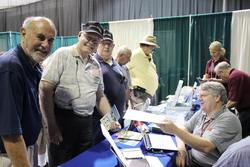

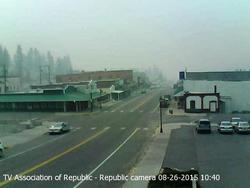

.jpg) "[M]ost Commission resources normally accessible through the Commission's website, including access to all electronic filing systems and electronic dockets, will be inaccessible for the same period, with the exception of the Network Outage Reporting System (NORS), the Consumer Help Center (CHC), and the Disaster Information Reporting System (DIRS), which will remain available," an FCC
"[M]ost Commission resources normally accessible through the Commission's website, including access to all electronic filing systems and electronic dockets, will be inaccessible for the same period, with the exception of the Network Outage Reporting System (NORS), the Consumer Help Center (CHC), and the Disaster Information Reporting System (DIRS), which will remain available," an FCC .jpg) "The agent, working with a local amateur group which included Mr Hicks, was unable to locate the source of the transmission," recounted the NAL, signed by FCC District Director James Bridgewater. Nearly a year later, in response to continued interference complaints, an agent from the Bureau's Detroit office returned to the Cincinnati area to take another crack at finding the source of the transmissions.
"The agent, working with a local amateur group which included Mr Hicks, was unable to locate the source of the transmission," recounted the NAL, signed by FCC District Director James Bridgewater. Nearly a year later, in response to continued interference complaints, an agent from the Bureau's Detroit office returned to the Cincinnati area to take another crack at finding the source of the transmissions.
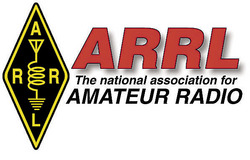 Incumbents in four other ARRL Divisions faced no challengers in the current election cycle and have been declared re-elected. They are Central Division Director Dick Isely, W9GIG, and Vice Director Kermit Carlson, W9XA; Hudson Division Director Mike Lisenco, N2YBB, and Vice Director Bill Hudzik, W2UDT; New England Division Director Tom Frenaye, K1KI, and Vice Director Mike Raisbeck, K1TWF, and Roanoke Division Director Dr Jim Boehner, N2ZZ, and Vice Director Bill Morine, N2COP.
Incumbents in four other ARRL Divisions faced no challengers in the current election cycle and have been declared re-elected. They are Central Division Director Dick Isely, W9GIG, and Vice Director Kermit Carlson, W9XA; Hudson Division Director Mike Lisenco, N2YBB, and Vice Director Bill Hudzik, W2UDT; New England Division Director Tom Frenaye, K1KI, and Vice Director Mike Raisbeck, K1TWF, and Roanoke Division Director Dr Jim Boehner, N2ZZ, and Vice Director Bill Morine, N2COP.
.png) As ARRL Chief Technology Officer Brennan Price, N4QX, explained last spring following the second Conference Preparatory Meeting (CPM), the agenda item 1.4 proposals at the CPM were "all over the map -- ranging from no change to an expansive allocation of 5275-5450 kHz, with explicit suggestions of 15 kHz and 100 kHz in between, and a few methods with details to be filled in later." As Price summarized at the time, "[T]here is a wide divergence of opinion, and no certainty as to the outcome."
As ARRL Chief Technology Officer Brennan Price, N4QX, explained last spring following the second Conference Preparatory Meeting (CPM), the agenda item 1.4 proposals at the CPM were "all over the map -- ranging from no change to an expansive allocation of 5275-5450 kHz, with explicit suggestions of 15 kHz and 100 kHz in between, and a few methods with details to be filled in later." As Price summarized at the time, "[T]here is a wide divergence of opinion, and no certainty as to the outcome.".jpg) "The IARU Satellite Adviser, Hans van de Groenendaal, ZS6AKV, and his advisory panel are mandated to coordinate frequencies within the IARU band plans for amateur satellites," said a public statement released on August 20 by IARU Secretary Rod Stafford, W6ROD. "Coordinated frequencies must comply with band plans that are common to all three IARU regions. Satellites coordinated outside these plans could cause interference to terrestrial amateur operations in other regions."
"The IARU Satellite Adviser, Hans van de Groenendaal, ZS6AKV, and his advisory panel are mandated to coordinate frequencies within the IARU band plans for amateur satellites," said a public statement released on August 20 by IARU Secretary Rod Stafford, W6ROD. "Coordinated frequencies must comply with band plans that are common to all three IARU regions. Satellites coordinated outside these plans could cause interference to terrestrial amateur operations in other regions."
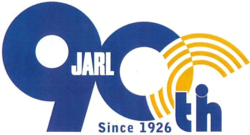 JARL Sets 90th Anniversary QSO Party: The Japan Amateur Radio League (JARL) will commemorate its 90th anniversary with the
JARL Sets 90th Anniversary QSO Party: The Japan Amateur Radio League (JARL) will commemorate its 90th anniversary with the  Send Your Name (and Call Sign) to Mars! Mars enthusiasts can participate in NASA's next journey to Mars by adding their names -- and call signs -- to a silicon microchip headed to the Red Planet aboard NASA's InSight Mars lander, scheduled to launch next year. "Our next step in the journey to Mars is another fantastic mission to the surface," said Jim Green, director of planetary science at NASA Headquarters in Washington. "By participating in this opportunity to send your name aboard InSight to the Red Planet, you're showing that you're part of that journey and the future of space exploration." NASA issued a similar invitation in 2014 for its Orion test flight. So far nearly 365,000 "boarding passes" have been registered with the InSight mission. NASA will accept submissions until September 8.
Send Your Name (and Call Sign) to Mars! Mars enthusiasts can participate in NASA's next journey to Mars by adding their names -- and call signs -- to a silicon microchip headed to the Red Planet aboard NASA's InSight Mars lander, scheduled to launch next year. "Our next step in the journey to Mars is another fantastic mission to the surface," said Jim Green, director of planetary science at NASA Headquarters in Washington. "By participating in this opportunity to send your name aboard InSight to the Red Planet, you're showing that you're part of that journey and the future of space exploration." NASA issued a similar invitation in 2014 for its Orion test flight. So far nearly 365,000 "boarding passes" have been registered with the InSight mission. NASA will accept submissions until September 8. .jpg) Launch Date Set for AMSAT Fox-1A Set: AMSAT Vice President of Engineering Jerry Buxton, N0JY, has announced that the Fox-1A CubeSat will launch on October 8 from California. It initially had been set to launch in August. Fox-1A will include an FM transponder with an uplink frequency of 435.180 MHz, and a downlink frequency of 145.980 MHz. The first phase of the Fox series 1-Unit CubeSats will allow simple ground stations using handheld transceivers and simple dual-band antennas to make contacts. The
Launch Date Set for AMSAT Fox-1A Set: AMSAT Vice President of Engineering Jerry Buxton, N0JY, has announced that the Fox-1A CubeSat will launch on October 8 from California. It initially had been set to launch in August. Fox-1A will include an FM transponder with an uplink frequency of 435.180 MHz, and a downlink frequency of 145.980 MHz. The first phase of the Fox series 1-Unit CubeSats will allow simple ground stations using handheld transceivers and simple dual-band antennas to make contacts. The 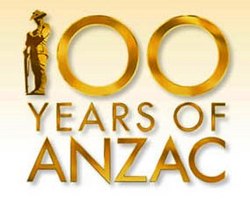 Postponed VI0ANZAC Operation from Antarctica Set for August 29-30 Weekend: The Antarctic activation of VI0ANZAC that was postponed earlier this month will take place over the August 29-30 weekend fom Casey Base in the Australian Antarctic Territory, weather permitting. The VI0ANZAC activation will be part of the Wireless Institute of Australia ANZAC 100 program to mark the 100th anniversary of the famous World War I Battle at Gallipoli. The Wireless Institute of Australia (
Postponed VI0ANZAC Operation from Antarctica Set for August 29-30 Weekend: The Antarctic activation of VI0ANZAC that was postponed earlier this month will take place over the August 29-30 weekend fom Casey Base in the Australian Antarctic Territory, weather permitting. The VI0ANZAC activation will be part of the Wireless Institute of Australia ANZAC 100 program to mark the 100th anniversary of the famous World War I Battle at Gallipoli. The Wireless Institute of Australia (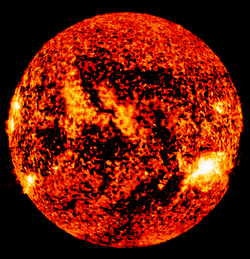 At 0012 UTC on August 27 Australia's Space Weather Services issued a geomagnetic warning for increased geomagnetic activity expected on August 27-28 due to a high-speed windstream coming from a coronal hole. On August 27 expect quiet to unsettled conditions with active to minor storm periods, and on August 28 look for active to unsettled geomagnetic conditions.
At 0012 UTC on August 27 Australia's Space Weather Services issued a geomagnetic warning for increased geomagnetic activity expected on August 27-28 due to a high-speed windstream coming from a coronal hole. On August 27 expect quiet to unsettled conditions with active to minor storm periods, and on August 28 look for active to unsettled geomagnetic conditions.







